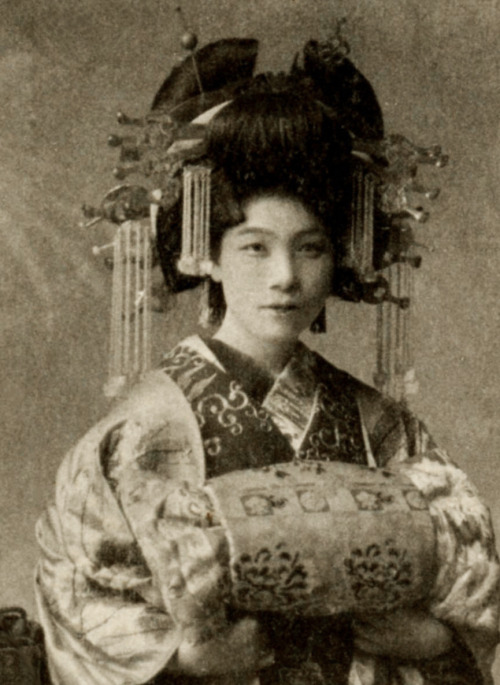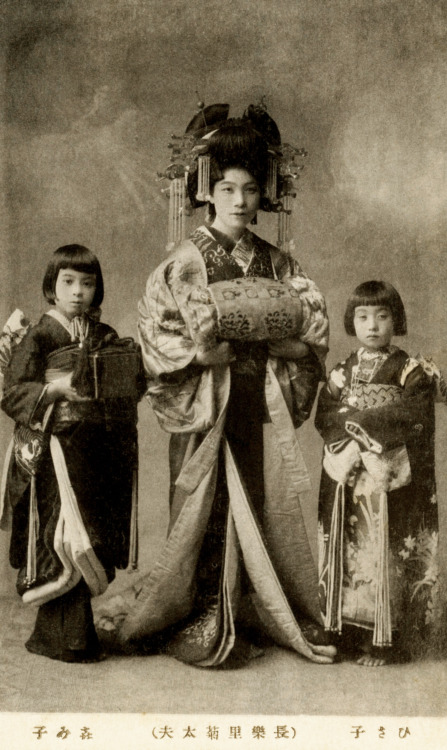thekimonogallery:Satogiku-dayuu 1910s. It was customary for a tayuu (Japanese courtesan) to have two
thekimonogallery:Satogiku-dayuu 1910s. It was customary for a tayuu (Japanese courtesan) to have two kamuro (child attendants) of about the same age and size, with names that matched in concept and sound, taking their cue from the name of their ane-jōro (elder sister courtesan). Text and image via Bkue Ruin 1 on Flickr.I do not believe that is the kanji for medicine. The kanji for medicine has the grass radical on top and uses different strokes on the sides of the kanji for white 薬. It looks like this alternate kanji for raku 樂, a kind that only seems to be used in names. Figuring out the pronunciation of her name was a touch difficult, and I would say that the first half of her name might be the name of her bordello rather then a part of her name. In that case, it might be Satogiku-dayuu of the Chouraku bordello. Alternatively, it could be the Nagara bordello (the first is the on reading, the second is the kun). The name of the kamuro on the right is Hisako ひさ子. The kamuro on the left’s name is 垚み子. I’m pretty sure the pronunciation is Kimiko, but I’m not one 100% sure as the first kanji is not in the general section of my dictionary and barely shows up in Japanese word searches at all. The kanji seems to be used more in Chinese then Japanese and means a mound or roundish mass. Most of its pronunciations are the Chinese readings, and only one Japanese dictionary site provided the Ki pronunciation. Last two paragraphs of text by fuyou-hime on Flickr -- source link
Tumblr Blog : thekimonogallery.tumblr.com



